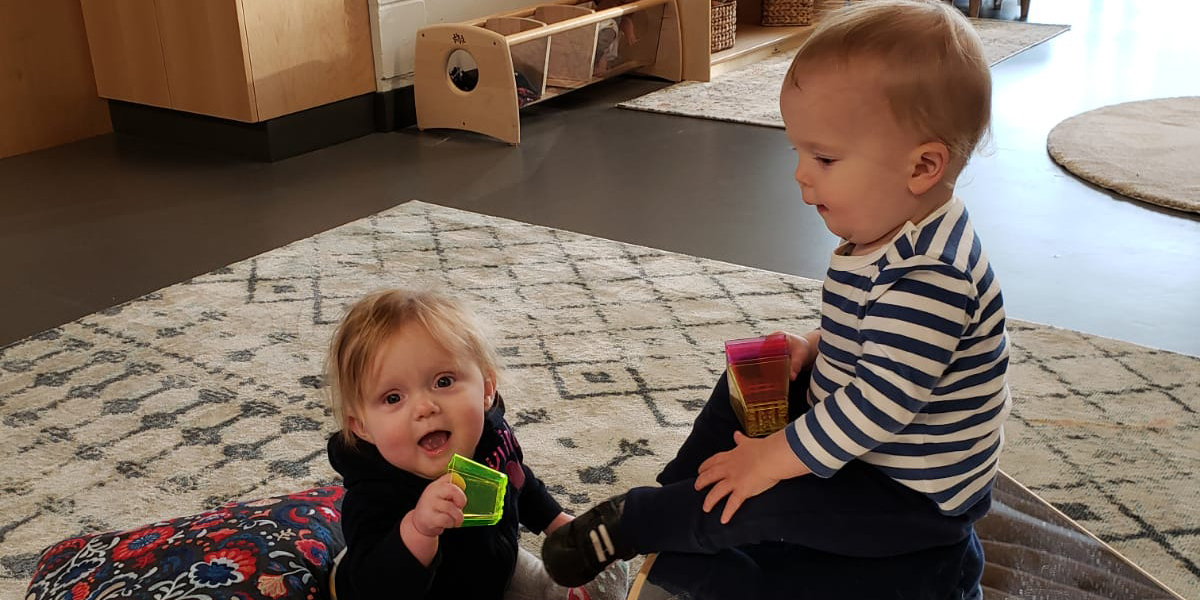
From Maryam, our Learning Centre Director:
Observation and reflection is the foundation of Emergent Curriculum. As educators, we must be able to record our observations, our thoughts and our feelings to be able to reflect, redirect and rethink our ways of living and learning with children.
As the Learning Centre Director, one of my roles at Frog Hollow is to spend time with educators and children in our programs. Our newly opened centre, The Village, is the first of our programs to invite infants in. We have started our journey with 12 infants who are very new to our space. Of course we share this experience with them as the space and the process is also very new to us educators.
Getting to know the babies, making connections and building trust has been our first priority. Sometimes this seems very difficult when you are surrounded by sad little souls. In this week’s journal I share my observation on a difficult day at the Infant room. I hope that my reflections can spark inspirations for educators working with very young children.
If you would like to learn more about observation and documentation, join our upcoming workshop.
Today as I sat in the infant room I found myself surrounded by three crying babies. “Who do I hold first?”; “How do I make them stop?”; “what to do?”; “How do I calm down these babies who barely know me and I barely know.”
I found myself searching my mind for old tricks, games… anything that would help manage. With my mind busy with all these questions I started slapping my legs randomly. Before I had time to move on to my next tool of distraction I noticed Elsie (12 months old). She had made her way to me crawling was slapping on my legs, looking at me with a curious smile.
For a split of second I found release of stress; my mind stopped searching over and over and found a focus.
“It makes sound, you’re right” I told Elsie. To this, Elsie slapped my leg again, creating a reciprocal dialogue with the sounds. I joined in, slapping my legs again, joining the conversation and I noticed some of the other infants became interested.
Xavier became very interested in the sounds and started clapping his hands on the floor. I joined in making a rhythm, noting that the sounds on the floor, legs, shoulders and other places were different than one another. As we were deep into our play, I looked around and notice that all crying had stopped. I now had six pairs of eyes staring at my hands, following them as they banged and slapped around.
The joy of the “common language’ we had found reminded me of Barry Dickson, one of the founders of Parent-Child Mother Goose Program.
Barry was a social worker having to bond with children at the most difficult times of their lives. A stranger to the children he needed to connect with, he took to the common and joyful language of music.
This thought automatically had me singing out loud. The first song got the babies close to me smiling. The second one got the wandering infants join in. The third and the fourth had Xavier and Elsie singing along in excitement.
Soon Sue (another educator) joined in with a crying baby who had just woken up. Before we knew it everyone in the room was sitting, lying, crawling around us, enjoying the music, the actions and – perhaps more than anything – the experience of the togetherness.
I was reminded once again of how children as young as a few months old have the ability to find joy in small things and how capable they are in communicating their thoughts with us. All we have to do is to stop thinking of how to manage and start listening to their 100 languages of expressing.
